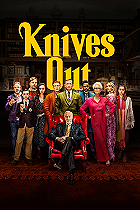The aging director at the center of Pain and Glory may call himself Salvador Mallo, but one glance at the giant silhouette on the poster lets you know it’s really Pedro Almodóvar. Crafting one of his most personal and autobiographical works, Almodóvar reveals more of where his provocative worldview and vibrant artistry springs from and invites several of his famous friends along for the ride. Not quite the career capper it threatens to be, please don’t quietly into that goodnight, Pedro, Pain and Glory is still one of his typically mesmerizing Escher-like creations.
Almodóvar is less in the mood for subversion and more in confessional spirit with his two-track narrative that finds Salvador as both infirmed artist and young boy. An opening voiceover narration, as is his tradition, provides context for where Salvador is in his present life, which is not a great place. Depression, anxiety, severe migraines, back problems, tinnitus – these are just some of the ailments sapping him of his creative powers, and that’s before we really start delving into his emotional problems in a more profound way.
We go back in time to a young boy traveling with his mother (Penélope Cruz in youth, Julieta Serrano in old age) to their new cavernous house in Paterna. Quite literally, as their house is a whitewashed cave that’s been converted to a home. Preternaturally gifted and precociously talented, he teaches a laborer named Eduardo (César Vicente) to read and write. Salvador gets his portrait painted by the soulful man and experiences his first erotic awakening when he fetches a towel for Eduardo after he takes a sponge bath in their home.
The sensuality and eroticism of Almodóvar’s cinema, most explicitly in his use of color, is one of his greatest trademarks. Eduardo’s bath features whites that are nearly blinding as they transform and highlight Vicente’s body into an Adonis-like spectacle. Or the bloodred sweater that the adult version wears when reuniting with a long-lost love that symbolizes a moment of reawakening and reconnection with the outside world. Clearly taking the lessons he’s learned from Douglas Sirk, Almodóvar fashions yet another candy-coated melodrama that bushes the boundaries of narrative absurdity within an explosion of color and texture.
Yet you can’t keep a rascal down for too long as Almodóvar promptly reintroduces Salvador to the leading man of his first success, Alberto (Asier Etxeandia) and has the two men commiserating over their wounds before engaging in casual heroin use. The two of them falling down the junkie rabbit hole together provides some of the sharpest, wildest gags in some time. Alberto is also responsible for laying the groundwork for Salvador’s eventual creative flourish as he finds unused manuscripts and begs to fashion them into a one-man show.
It is through the prism of Alberto’s one-man show that we gather further autobiographical purges from Salvador/Almodóvar. And the long-lost love that will provide a one-night reunion that makes Moonlight’s climax seem demur by comparison for all its sustained emotional expressions. Throughout, I had been convinced that Antonio Banderas was giving the performance of his career, but this sequence absolutely sealed it.
Banderas has a habit of appearing a bit hammy in his American films, not his fault but the fault of a system that doesn’t quite know what to do with him. His Spanish films, particularly his prior work with Almodóvar, is exemplary, and this could be the crown jewel of his career. Layered, minimalistic, achingly vulnerable and playfully stylish, Banderas crafts a portrait of a flame reigniting that’s as touching as he is improbably handsome.
Of course, Almodóvar always gets the best work out of his various muses, which Banderas absolutely should qualify as given the ways his camera has caressed and exemplified him over the years. The two of them have crafted a funny, beautiful, touching self-reflexive portrait that perhaps operates as a bit of wish fulfilment. (Whose mid-life crisis looks this glamorous?) The ending camera pull back to reveal Cruz being filmed in a scene by Banderas is another one of the director’s tricky climatic subversions that display that while he’s mellowed and matured with age, he’s still a provocateur at heart.
 Login
Login
 Home
Home 95 Lists
95 Lists 1531 Reviews
1531 Reviews Collections
Collections
 0 comments,
0 comments, 







